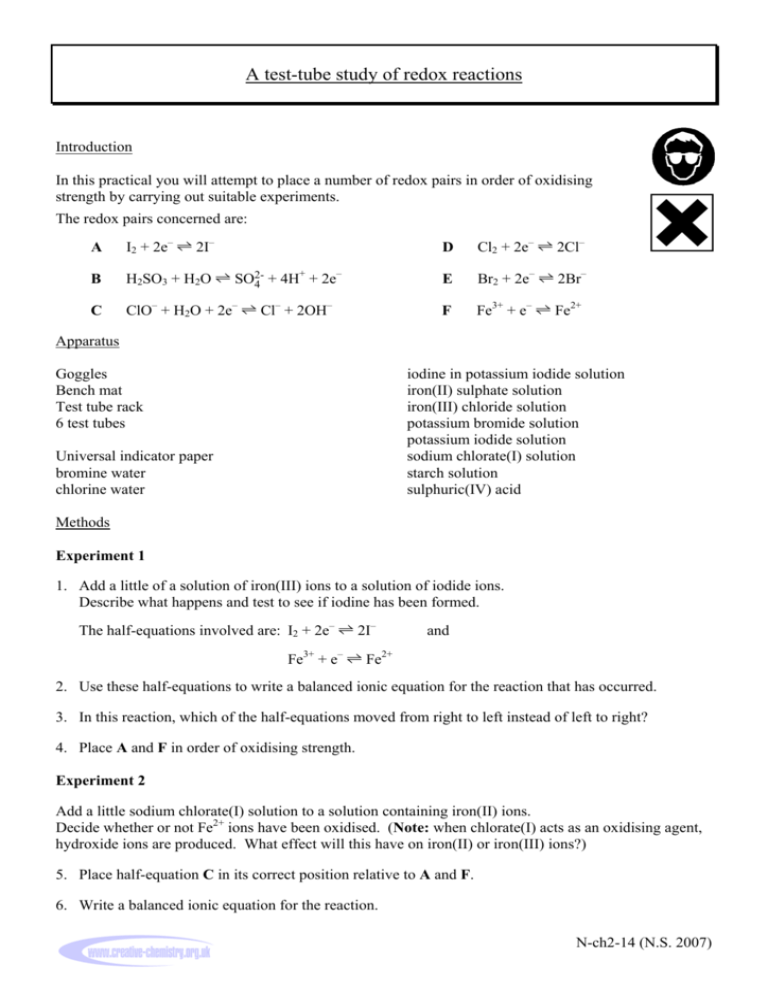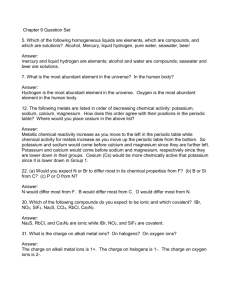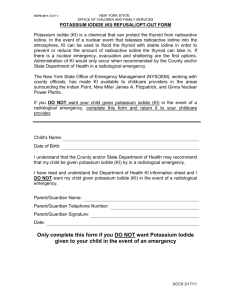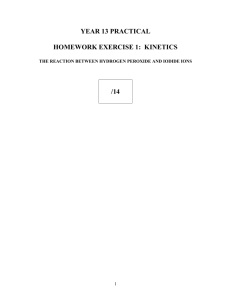A test-tube study of redox reactions
advertisement

A test-tube study of redox reactions Introduction In this practical you will attempt to place a number of redox pairs in order of oxidising strength by carrying out suitable experiments. The redox pairs concerned are: A I2 + 2e– 2I– D Cl2 + 2e– 2Cl– B + – H2SO3 + H2O SO24 + 4H + 2e E Br2 + 2e– 2Br– C ClO– + H2O + 2e– Cl– + 2OH– F Fe3+ + e– Fe2+ Apparatus Goggles Bench mat Test tube rack 6 test tubes iodine in potassium iodide solution iron(II) sulphate solution iron(III) chloride solution potassium bromide solution potassium iodide solution sodium chlorate(I) solution starch solution sulphuric(IV) acid Universal indicator paper bromine water chlorine water Methods Experiment 1 1. Add a little of a solution of iron(III) ions to a solution of iodide ions. Describe what happens and test to see if iodine has been formed. The half-equations involved are: I2 + 2e– 2I– and Fe3+ + e– Fe2+ 2. Use these half-equations to write a balanced ionic equation for the reaction that has occurred. 3. In this reaction, which of the half-equations moved from right to left instead of left to right? 4. Place A and F in order of oxidising strength. Experiment 2 Add a little sodium chlorate(I) solution to a solution containing iron(II) ions. Decide whether or not Fe2+ ions have been oxidised. (Note: when chlorate(I) acts as an oxidising agent, hydroxide ions are produced. What effect will this have on iron(II) or iron(III) ions?) 5. Place half-equation C in its correct position relative to A and F. 6. Write a balanced ionic equation for the reaction. N-ch2-14 (N.S. 2007) Experiment 3 Add a little sodium chlorate(I) solution to a solution containing bromide ions. Decide whether or not bromide ions have been oxidised to bromine. 7. Can chlorate(I) ions oxidise bromide to bromine? 8. Place half-equation E in its correct place in the list. 9. Write a balanced ionic equation for the reaction. Experiment 4 Add a little sulphuric(IV) acid (sulphurous acid) to a solution containing iodine, I2, and note the result. 10. Place half-equation B in its correct position in the list. 11. Write a balanced ionic equation for the reaction. Experiment 5 Decide the position of half-equation D by adding chlorine water to a solution containing bromide ions. 12. Place half-equation D in its correct position. 13. Write a balanced ionic equation for the reaction. 14. Use your final order of oxidising power to predict whether chlorate(I) ions will oxidise iodide ions to iodine. Experiment 6 Test your prediction in part 14 experimentally. N-ch2-14 (N.S. 2007) A Test–Tube Study of Redox Reactions Technician's Notes Apparatus Per student: 1 x test tube rack 6 x test tubes Reagents Universal indicator paper Allow approximately 10cm3 each of the following solutions per student: approx. 0.2M iron(III) chloride solution approx. 0.2M potassium iodide solution approx. 0.2M sodium chlorate(I) solution ("sodium hypochlorite") approx. 0.2M iron(II) sulphate approx. 0.2M potassium bromide solution chlorine water bromine water iodine in potassium iodide solution starch solution sulphuric(IV) acid (burn a pea-sized piece of sulphur in a gas jar in the fume cupboard and dissolve the white fumes in water) N-ch2-14 (N.S. 2007)







